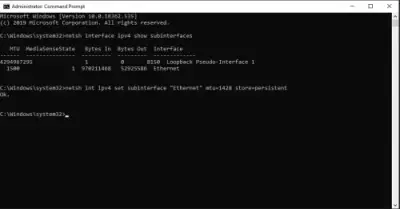RachaelSeven
New Around Here
So I ran into an issue where certain websites suddenly wouldn't load and I could not get an upload speed test to work (download tests did work). Things had been working fine previously and I do not know what precipitated the problem, perhaps a router firmware upgrade or maybe a change at my ISP. My setup is RT-AC68U running the latest Merlin, with a variety of LAN and WiFi clients. I tried all manner of resetting winsock, resetting the router, etc, etc, and nothing worked. I finally tracked the issue down to an MTU problem. Apparently my ISP needs an MTU of 1492 rather than 1500, even though it is a static IP and not a PPPoE, or at least that's what my ping testing indicated. So I set the MTU at 1492 in the WAN settings on the AC68U and voila, my upload speed tests work and the websites are reachable. But, to my dismay, a bunch of other websites stopped working. The only way I could get this new batch of websites to start working again was to force the devices on my local network to also use an MTU of 1492, by setting it using netsh from a command prompt. I didn't think I was supposed to have to do that - I thought MTU could be different on the LAN and WAN side, but apparently not. I also thought MTU was supposed to negotiate itself down through MTU discovery, but also apparently not. The only problem left was that those devices where I couldn't force the MTU, like my iPhone, still couldn't reach the second set of websites, which included among others, duckduckgo.com (my preferred search engine), squareup.com (my payment process for my business), and a whole lot of other major sites. In desperation, I tried enabling jumbo frames on the Switch Control page of the LAN settings and eureka, my phone (and all my other devices) could go everywhere again.
That's what I went through, and that's how I made it work in my near total ignorance of what I was doing. I feel like a monkey randomly pushing buttons until something just happened to work. I'm particularly concerned about having enabled jumbo frames, since everything I read indicated that was not a great idea. Can anyone explain what actually went wrong and what I should have done to fix it? Any advice or enlightenment would be most appreciated. Thank you.
That's what I went through, and that's how I made it work in my near total ignorance of what I was doing. I feel like a monkey randomly pushing buttons until something just happened to work. I'm particularly concerned about having enabled jumbo frames, since everything I read indicated that was not a great idea. Can anyone explain what actually went wrong and what I should have done to fix it? Any advice or enlightenment would be most appreciated. Thank you.


